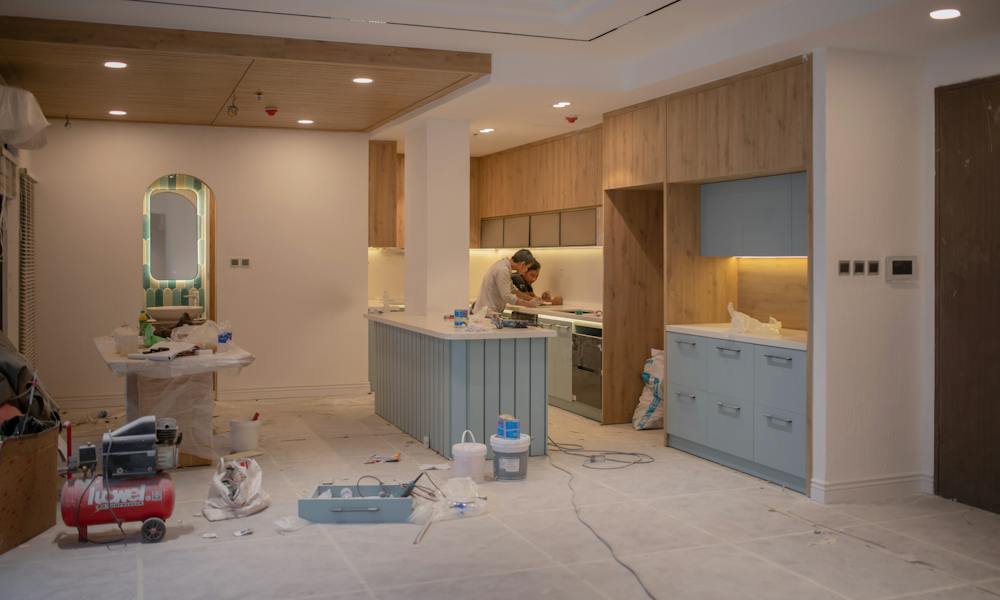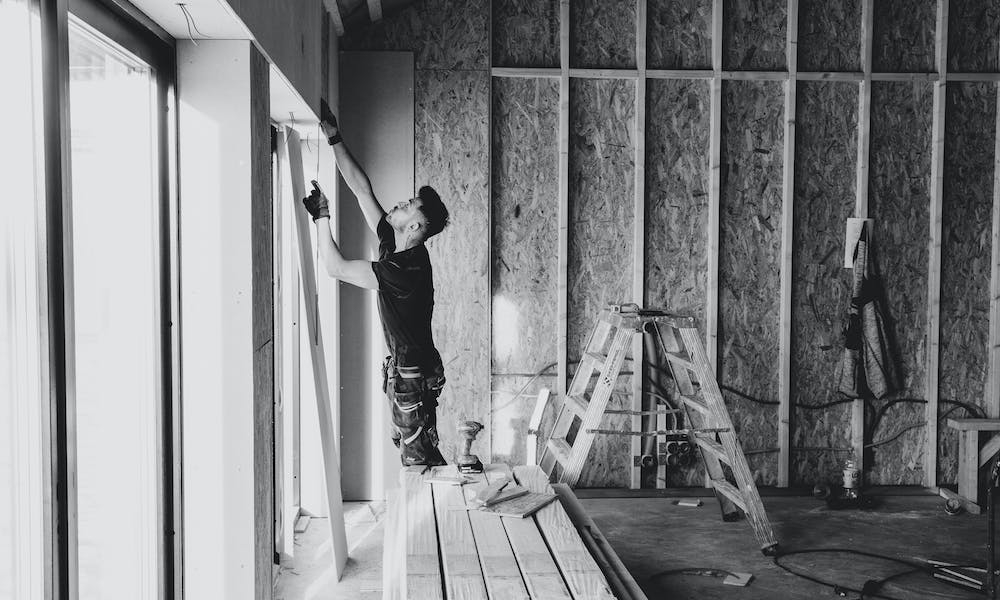

Navigating the real estate market can be a complex and daunting task, especially when you are looking to sell a home that is in need of repairs. Whether it’s worn-out flooring, outdated fixtures, or more significant structural issues, homes that require fixing up can be perceived as less attractive to potential buyers. However, with the right strategy and approach, selling a property that needs some TLC is not only possible, but it can also be a profitable endeavor. Welcome to our comprehensive guide focused on how to sell a home that needs repairs, where we delve into expert tips and strategies to help you attract buyers, secure offers, and close the deal on your property.
In this blog post, we will cover everything from assessing and prioritizing repairs, to pricing your home accurately, and marketing it effectively to reach the right audience. We understand the unique challenges that come with selling a fixer-upper, and we are here to provide you with actionable advice and insights to make the process smoother and more successful. Whether you are a homeowner looking to sell your property ‘as is’, or an investor aiming to flip a house for profit, this guide is tailored to meet your needs and help you navigate how to sell a home that needs repairs.
Read More:
- How Much House Can i Afford With 60k Salary? Step by Step Guide
- Selling a House in an Irrevocable Trust Before Death: A Step-by-Step Guide
- Can Grandchildren Inherit From Grandparents? Step by Step Guide
- Can a Nursing Home Take a Trust? The Ultimate Guide
- Selling Mom’s House After Death: A Compassionate Guide
How to Sell a Home That Needs Repairs? Understanding Your Target Market


When it comes to selling a home that needs repairs, recognizing your potential buyers is crucial. Different types of buyers are attracted to fixer-upper properties for various reasons, and understanding their motivations and expectations can significantly influence your selling strategy.
1. Investors and Property Flippers:
Who They Are: These are individuals or entities looking to purchase properties at a lower price, invest in repairs and renovations, and then sell for a profit. What They Want: They are interested in properties with a high potential for appreciation after repairs are made. Their main concern is the bottom line – how much will repairs cost, and what will be the property’s value after those repairs are done? How to Attract Them: Highlight the property’s potential and the estimated after-repair value. Provide a detailed breakdown of necessary repairs and potential costs to help them make a quick decision. Read More: selling your house before foreclosure
2. DIY Homeowners:
Who They Are: These are homebuyers who are willing to put in sweat equity to make a house their home. What They Want: They are looking for a bargain and are not afraid of repairs, as long as they are manageable. They often prefer cosmetic repairs over structural issues. How to Attract Them: Showcase the home’s potential and provide inspiration for how it could look after repairs. Highlight any unique features of the home that could be enhanced with a bit of work.
3. Bargain Hunters:
Who They Are: Buyers looking for a deal, regardless of the property’s condition. What They Want: Their main motivation is the price. They are willing to take on repairs if it means they are getting the home at a significantly reduced price. How to Attract Them: Price the property competitively, taking into account the cost of repairs. Be transparent about the property’s condition and the estimated repair costs.
4. Renovation Lovers:
Who They Are: Buyers who enjoy the process of transforming a home, regardless of how much work is required. What They Want: They are looking for a property with a character that they can bring back to life. They are less concerned about minor repairs and more interested in the potential to create their dream home. How to Attract Them: Highlight the home’s unique features and its potential after renovations. Share stories or examples of similar homes that have been transformed.
Benefits and Drawbacks:
Benefits: These types of buyers are often more flexible and understanding about the condition of the home. They may be more willing to negotiate and less likely to request extensive repairs before closing. Drawbacks: They are also likely to be more price-conscious, and they might have a sharper eye for potential issues that could affect the property’s value.
Understanding your target market is a vital step in selling a home that needs repairs. By identifying who your potential buyers are, what they are looking for, and how to appeal to them, you can tailor your selling strategy to meet their needs, ultimately leading to a quicker and more successful sale.
Assessing the Condition of Your Home
Selling a home that requires repairs starts with a clear and honest assessment of its condition. Understanding the extent of the repairs needed will help you make informed decisions on pricing, marketing, and negotiating with potential buyers. Here’s how to go about it:
1. Conduct a Thorough Inspection:
Get Professional Help: Consider hiring a licensed home inspector to get an unbiased assessment of your property’s condition. They can identify both obvious and hidden issues that might need attention.
Do It Yourself: If you’re experienced in home maintenance, you might choose to do a preliminary inspection yourself. Look for signs of wear and tear, structural issues, and any other repairs that might be needed.
2. Create a Detailed Repair Checklist:
Prioritize the Repairs: Once you have a comprehensive list of potential issues, categorize them by urgency. Safety issues and structural defects should be at the top of your list.
Estimate Repair Costs: Research or consult with professionals to get a rough estimate of how much each repair would cost. This will be crucial in determining your selling price and negotiating with buyers.
3. Understand the Impact on Your Home’s Value:
Research Comparable Sales: Look at similar homes in your area that have sold recently, paying close attention to their condition and final selling price.
Consult with a Real Estate Agent: A local real estate agent can provide valuable insights into how repairs might affect your home’s market value.
4. Consider the ROI of Making Repairs:
Weigh the Costs and Benefits: Some repairs might significantly increase your home’s value, while others might not be worth the investment.
Make Strategic Decisions: Decide which repairs to make based on their potential return on investment and how they might improve your home’s appeal to buyers.
5. Document Everything:
Keep a Record: Make sure to document the condition of your home and any repairs made, including before-and-after photos, receipts, and any warranties or guarantees.
Provide Transparency to Buyers: Being transparent about the condition of your home and the repairs made (or needed) can build trust with potential buyers and contribute to a smoother selling process.
A thorough assessment of your home’s condition is the foundation of a successful sale, especially when repairs are needed. By understanding the extent of the work required, you can make informed decisions on pricing, attract the right buyers, and negotiate confidently, ultimately leading to a successful transaction.
Read More:
- How Much House Can i Afford With 60k Salary? Step by Step Guide
- Selling a House in an Irrevocable Trust Before Death: A Step-by-Step Guide
- Can Grandchildren Inherit From Grandparents? Step by Step Guide
- Can a Nursing Home Take a Trust? The Ultimate Guide
- Selling Mom’s House After Death: A Compassionate Guide
Prioritizing Repairs & Setting the Right Price


Once you’ve assessed the condition of your home, the next critical steps are deciding which repairs to tackle and determining the right asking price. This delicate balance requires strategic thinking to ensure that you maximize your return on investment while making your property appealing to potential buyers.
Prioritizing Repairs:
Focus on Safety and Structural Integrity: Address any safety concerns or structural issues first. Buyers and home inspectors will flag these, and they could be potential deal-breakers.
Consider Cosmetic Upgrades: Sometimes, minor cosmetic upgrades can significantly boost your home’s appeal. Fresh paint, new fixtures, or updated flooring can make a substantial difference.
Evaluate the Cost-Benefit Ratio: Analyze which repairs will give you the best return on investment. Sometimes, fixing minor issues can lead to a higher selling price.
Think Like a Buyer: Put yourself in the buyer’s shoes. Which repairs or improvements would make the property more attractive to you?
Setting the Right Price:
Understand Your Market: Research the local real estate market to understand the pricing of similar homes, especially those in comparable condition.
Factor in Repair Costs: When setting your asking price, consider the cost of the repairs that are still needed. Buyers will be calculating these into their offers.
Be Realistic and Competitive: Price your home competitively to attract interest. An overpriced home, especially one that needs work, could sit on the market for an extended period.
Stay Open to Negotiation: Be prepared for negotiations. Buyers will likely try to negotiate the price down further, considering the repairs needed.
Providing a Clear Picture:
Transparency is Key: Be upfront about the condition of the home and the repairs you’ve made or decided not to make. This builds trust with potential buyers.
Offer Estimates: Providing potential buyers with repair cost estimates from reputable contractors can aid in transparency and show that you’ve done your due diligence.
Strategically prioritizing repairs and setting a competitive and realistic price are crucial steps in selling a home that needs work. By focusing on essential repairs and being transparent about the property’s condition, you can attract the right buyers and set the stage for a successful sale.
Effective Marketing Strategies
Selling a home in need of repairs requires a unique marketing approach to highlight its potential and attract the right buyers. Utilize these effective strategies to showcase your property’s value and turn perceived negatives into positives.
Highlight the Home’s Potential:
Focus on Future Value: Emphasize what the property could become with the necessary repairs and renovations. Use language that inspires imagination and highlights potential.
Before-and-After Examples: If possible, show examples of similar homes that have been renovated to help buyers visualize the transformation.
High-Quality Visuals:
Invest in Professional Photography: Good photographs can make a world of difference. Ensure that your property is well-lit and captured from the best angles.
Create a Virtual Tour: Offer a virtual walkthrough to help potential buyers get a sense of the space and layout.
Transparent and Honest Listings:
Be Upfront About Repairs: Clearly state in your listing that the home needs repairs, but frame it in a way that emphasizes the opportunity for customization and value addition.
Provide a Detailed Description: Use your listing to provide a thorough and honest description of the property’s condition, highlighting both its strengths and areas that need work.
Utilizing Social Media and Online Platforms:
Leverage Social Media: Share your listing on various social media platforms to increase visibility. Use before-and-after images of other properties to engage potential buyers.
Online Real Estate Portals: Ensure your property is listed on popular real estate websites, and that your listing is complete with high-quality photos and a detailed description.
Building a Story Around the Property:
Share the Home’s History: If the home has a unique or interesting history, share it in your marketing materials. Stories help create emotional connections.
Focus on Location and Amenities: Highlight the benefits of the home’s location, neighborhood, and nearby amenities.
Networking with Real Estate Agents and Investors:
Connect with Agents Specializing in Fixer-Uppers: These agents will have a network of potential buyers interested in homes that need repairs.
Reach Out to Local Investors: Investors are always on the lookout for their next project. Make sure your property is on their radar.
Effectively marketing a home that needs repairs requires a strategic approach, focusing on the property’s potential and being transparent about its condition. By employing these tactics, you can attract buyers who are specifically looking for a property like yours, leading to a quicker and smoother sale.
Read More:
- How Much House Can i Afford With 60k Salary? Step by Step Guide
- Selling a House in an Irrevocable Trust Before Death: A Step-by-Step Guide
- Can Grandchildren Inherit From Grandparents? Step by Step Guide
- Can a Nursing Home Take a Trust? The Ultimate Guide
- Selling Mom’s House After Death: A Compassionate Guide
Being Transparent and Building Trust


In the world of real estate, transparency is key—especially when you are selling a home that requires repairs. Building trust with potential buyers can lead to a smoother transaction, quicker sale, and possibly even a better price. Here’s how you can approach this vital aspect of the selling process.
Honest Communication:
Disclose Issues Up Front: Be upfront about the condition of the property and any known issues. Honesty from the outset prevents surprises during the inspection and establishes trust.
Provide Documentation: Share any existing inspection reports, repair estimates, or receipts from work already completed. This transparency shows that you are open and honest about the home’s condition.
Emphasize the Positive:
Highlight the Home’s Potential: While being clear about the necessary repairs, also emphasize the home’s potential and the value that can be added through renovations.
Focus on the Benefits: Does the home have a great location, a spacious yard, or other desirable features? Make sure these are highlighted in your marketing materials.
Building Trust Through Professionalism:
Work with a Reputable Agent: Partnering with a reputable real estate agent who has experience in selling fixer-uppers can lend credibility to your listing.
Consider a Pre-Listing Inspection: By conducting an inspection before listing, you can provide potential buyers with a comprehensive understanding of the home’s condition, further building trust.
Pricing it Right:
Be Realistic in Your Asking Price: Ensure your asking price reflects the home’s condition and the cost of needed repairs. An inflated price can erode trust and deter potential buyers.
Be Prepared for Negotiations: Buyers will likely factor in the cost of repairs when making an offer. Be open to negotiations and be prepared to discuss how you arrived at your asking price.
Closing with Confidence:
Reassure the Buyer: Provide reassurances regarding the property’s condition, and be willing to answer any and all questions they may have.
Maintain Transparency Throughout the Process: Keep the lines of communication open throughout the entire selling process, from listing to closing.
Being transparent and building trust is crucial when selling a home that needs repairs. By openly communicating about the property’s condition, emphasizing its potential, and being realistic in your pricing, you can establish a positive relationship with potential buyers, leading to a more successful sale.
By implementing these strategies, sellers can create an atmosphere of trust and transparency, which is especially important when selling a property that requires work. This approach not only attracts serious buyers but also facilitates a smoother and more straightforward selling process.
Exploring Alternative Selling Options
Selling a home that needs repairs doesn’t mean you are limited to the traditional real estate market. There are several alternative options available that might be more suitable, depending on your circumstances, timeline, and the condition of the property.
1. Selling As-Is:
Understanding As-Is Sales: Selling your home “as-is” means selling it in its current condition, without making any repairs or improvements. This option can be attractive to certain buyers looking for a project or an investment.
The Pros and Cons: While this option can lead to a quicker sale and less hassle, it might also result in a lower selling price. Ensure you understand the trade-offs before deciding to go this route.
2. Targeting Real Estate Investors:
Finding the Right Audience: Real estate investors are often looking for properties to fix up and either rent out or resell. Your property might be exactly what they are looking for.
Negotiating the Deal: Be prepared for investors to negotiate hard on the price. They need to ensure there is enough room in the deal for them to make a profit after making the necessary repairs.
3. Offering Seller Financing:
Understanding Seller Financing: This option involves acting as the bank and providing financing to the buyer. This can make your property more attractive, especially if it needs significant repairs.
Weighing the Risks: While seller financing can open your property up to a larger pool of buyers, it also comes with risks. Ensure you consult with a financial advisor and an attorney to understand the implications and set up a secure agreement.
4. Considering a Short Sale:
When You Owe More Than the Home is Worth: If the cost of the necessary repairs means you are unlikely to sell the home for enough to pay off your mortgage, a short sale might be an option.
Working with Your Lender: In a short sale, the lender agrees to accept less than the amount owed on the mortgage. This process can be complex and time-consuming, so it’s important to work with a real estate agent and an attorney who specializes in short sales.
5. Auctioning the Property:
A Quick Sale Option: An auction can be a fast way to sell a property, although it’s important to set a realistic reserve price to ensure you don’t end up selling for less than you are comfortable with.
Understanding the Process: Make sure you understand how property auctions work and the fees involved before choosing this option.
Exploring alternative selling options can provide solutions when selling a home that needs repairs. Whether you decide to sell as-is, target investors, offer seller financing, consider a short sale, or auction the property, ensure you understand the pros and cons of each option and seek professional advice to make the best decision for your situation.
Read More:
- How Much House Can i Afford With 60k Salary? Step by Step Guide
- Selling a House in an Irrevocable Trust Before Death: A Step-by-Step Guide
- Can Grandchildren Inherit From Grandparents? Step by Step Guide
- Can a Nursing Home Take a Trust? The Ultimate Guide
- Selling Mom’s House After Death: A Compassionate Guide
Preparing for Inspections and Appraisals
When selling a home that requires repairs, inspections, and appraisals are critical components of the process. These assessments provide a clear picture of the property’s condition and value, influencing the buyer’s decision and the final sale price. Here’s how to prepare for these evaluations to ensure a smooth transaction.
Understanding the Importance:
The Role of Inspections: A home inspection is a thorough examination of the property’s condition. For homes needing repairs, this can highlight issues that may not be immediately visible. Read More: should I sell my house to a wholesaler
The Appraisal Process: An appraisal determines the property’s market value. For homes with needed repairs, this can sometimes result in a lower valuation.
Proactive Measures:
Conduct a Pre-Listing Inspection: Consider having an inspection before listing your home. This can help you uncover potential issues and decide which repairs to address prior to putting the property on the market.
Gather Documentation: Have all relevant documentation ready, including any previous inspection reports, receipts for repairs or maintenance work, and quotes for pending repairs.
Making a Good Impression:
Clean and Tidy: Ensure the property is clean and as tidy as possible. First impressions count, even during an inspection.
Easy Access: Ensure the inspector and appraiser have easy access to all areas of the property, including basements, attics, and crawl spaces.
Handling Identified Issues:
Be Honest and Transparent: If the inspector uncovers issues, be honest and transparent with potential buyers about them.
Negotiating Repairs: Be prepared to negotiate on repairs. Some buyers may request that certain issues be addressed before closing or may ask for a price reduction to cover the cost of repairs.
Using the Appraisal to Your Advantage:
Highlight Positive Features: Make sure the appraiser is aware of any upgrades or improvements you have made to the property.
Addressing a Low Appraisal: If the property appraises for lower than the sale price, be prepared to negotiate with the buyer. This may involve lowering the price or providing additional comparable sales data to justify the price.
Preparing for inspections and appraisals is a critical part of selling a home that needs repairs. By taking proactive steps to address issues, being transparent about the property’s condition, and being prepared for negotiations, you can ensure a smoother sale process and build trust with potential buyers.
How to Sell a Home That Needs Repairs? Closing the Deal


Selling a home that requires repairs comes with its unique set of challenges, but with the right strategies in place, you can successfully navigate through to the closing table. Here’s how to ensure a smooth transition from accepting an offer to handing over the keys.
1. Clear and Open Communication:
Maintain Transparency: Continue the transparency that you’ve maintained throughout the process. Ensure that all parties are on the same page regarding the property’s condition and the agreed-upon terms.
Prompt Responses: Be prompt in your responses to any inquiries or requests for information from the buyer or their agent. Time is of the essence in real estate transactions, and delays can lead to frustration or even jeopardize the deal.
2. Finalizing the Repairs:
Complete Agreed-Upon Repairs: If you have agreed to make any repairs as part of the sale agreement, ensure that these are completed promptly and by licensed professionals. Keep all receipts and documentation related to the work done.
Re-inspection if Necessary: If the buyer requests a re-inspection to verify the completion of repairs, coordinate this promptly and provide access as needed.
3. Preparing for the Appraisal and Final Walkthrough:
Ensure Property is Presentable: Even though the home needs repairs, ensure that it is clean and presentable for the appraisal and final walkthrough.
Address Any Last-Minute Concerns: If the buyer raises any concerns during the final walkthrough, address these promptly to avoid any delays in closing.
4. Reviewing and Signing Closing Documents:
Understand the Closing Statement: Review the closing statement carefully to ensure all financial details are accurate and agreed upon.
Prepare for Signing: Be prepared to sign a plethora of documents at closing. Ensure you understand what each document represents and do not hesitate to ask your real estate agent or attorney for clarification on anything you are uncertain about.
5. Handing Over the Keys:
Coordinate Key Exchange: Once all documents are signed and the sale is officially closed, coordinate with the buyer or their agent to hand over the keys.
Leave Property in Agreed-Upon Condition: Ensure the property is left in the agreed-upon condition, removing all personal belongings and leaving behind any items that were included in the sale.
6. After the Sale:
Keep Records of the Transaction: Ensure you keep copies of all documents related to the sale. These may be important for tax purposes or in case any questions arise after the sale.
Reflect and Learn: Take a moment to reflect on the sale process, noting what worked well and what could have been done differently. This learning experience can be invaluable for any future real estate transactions.
Closing the deal on a home that requires repairs requires careful navigation and attention to detail. By maintaining clear communication, completing any agreed-upon repairs, preparing for the final walkthrough, and ensuring all documents are in order, you can create a seamless closing experience for both parties.
Read More:
- How Much House Can i Afford With 60k Salary? Step by Step Guide
- Selling a House in an Irrevocable Trust Before Death: A Step-by-Step Guide
- Can Grandchildren Inherit From Grandparents? Step by Step Guide
- Can a Nursing Home Take a Trust? The Ultimate Guide
- Selling Mom’s House After Death: A Compassionate Guide
Selling a Home That Needs Repairs? FAQ Section:
Selling a home in need of repairs can be a complex process filled with questions and uncertainties. Below, we’ve compiled a list of frequently asked questions to provide clarity and guidance for homeowners navigating this unique selling situation.
Q1: Can I Sell My Home As-Is?
A1: Yes, you can sell your home as-is, meaning you are selling it in its current condition without making any repairs. However, it’s important to disclose any known issues to potential buyers and be aware that this might affect the sale price.
Q2: How Do I Price a Home That Needs Repairs?
A2: Pricing a home that requires repairs should take into consideration the cost of those repairs. You might choose to get quotes from contractors to better understand these costs and then adjust your asking price accordingly. Alternatively, you might price the home competitively and market it to investors or buyers looking for a fixer-upper.
Q3: Should I Make Repairs Before Selling?
A3: This depends on your financial situation and your end goals. Making key repairs can increase the value of your home and attract a broader pool of buyers, but it also requires an upfront investment. If you decide not to make repairs, be prepared to adjust your asking price to reflect the home’s condition.
Q4: How Do I Market a Home That Needs Repairs?
A4: Focus on the potential of the home and highlight its strengths. Be honest about the repairs needed, but also showcase the home’s best features, whether that’s its location, layout, or unique characteristics.
Q5: What Should I Disclose to Potential Buyers?
A5: Disclosure laws vary by state, but generally, you are required to disclose any known issues with the property. This might include structural issues, problems with the HVAC system, or any other significant repairs needed.
Q6: How Do Inspections and Appraisals Work for Homes Needing Repairs?
A6: Inspections and appraisals are a critical part of the selling process, even for homes in need of repairs. Be prepared for the inspector to note the areas that require attention, and for the appraisal to potentially reflect a lower value due to the repairs needed. Ensure the property is as presentable as possible, and provide any documentation of completed repairs or quotes for work needed.
Q7: What Are Some Alternative Selling Options?
A7: In addition to a traditional sale, you might consider selling to a real estate investor, auctioning the property, or even offering seller financing. Each option has its own pros and cons, so it’s important to do your research and consult with a real estate professional.
Q8: What Happens If My Home Doesn’t Appraise for the Sale Price?
A8: If the home appraises for less than the sale price, you have a few options. You can renegotiate the sale price with the buyer, offer to make certain repairs to increase the property’s value, or cancel the contract if both parties cannot agree on a new price.
Conclusion: Navigating the Sale with Confidence
Selling a home that needs repairs can initially seem like a daunting task, but with the right approach and preparation, it can be a smooth and successful process. The key is to understand your target market, accurately assess your property’s condition, set the right price, and implement effective marketing strategies.
Reflecting on the Journey
Be Transparent and Build Trust: Transparency is crucial when selling a home in need of repairs. Disclose issues, provide potential buyers with clear information, and build trust to create a positive transaction experience.
Consider All Selling Options: Explore various selling avenues, including selling as-is, making essential repairs, or even looking at alternative selling methods such as auctions or investor sales.
Prepare for Inspections and Appraisals: Be proactive in preparing for inspections and appraisals, ensuring that your property is presented in the best light possible, even with its imperfections.
Closing with Confidence
Finalize the Deal: Navigate through the closing process with confidence, ensuring all paperwork is in order, and addressing any final buyer concerns promptly.
Learn and Grow: Reflect on the experience, understanding what worked well and what could have been done differently. Use this knowledge to better equip yourself for future real estate ventures.
Embracing the Opportunities
Homes in need of repairs can appeal to a wide range of buyers, from investors looking for a new project to first-time homebuyers searching for a budget-friendly option they can customize over time. By being transparent, setting a fair price, and highlighting the potential of your property, you can attract the right buyer and ensure a successful sale.
A Bright Future Ahead: Selling a home that requires repairs might be challenging, but it also provides a unique opportunity to showcase the potential of a property. With the right strategies in place, you can navigate through the process, close the deal confidently, and look forward to your next adventure in the world of real estate.
This conclusion aims to wrap up the blog post by summarizing the key points, reassuring the homeowner, and leaving them feeling confident and prepared to sell their home that needs repairs.
